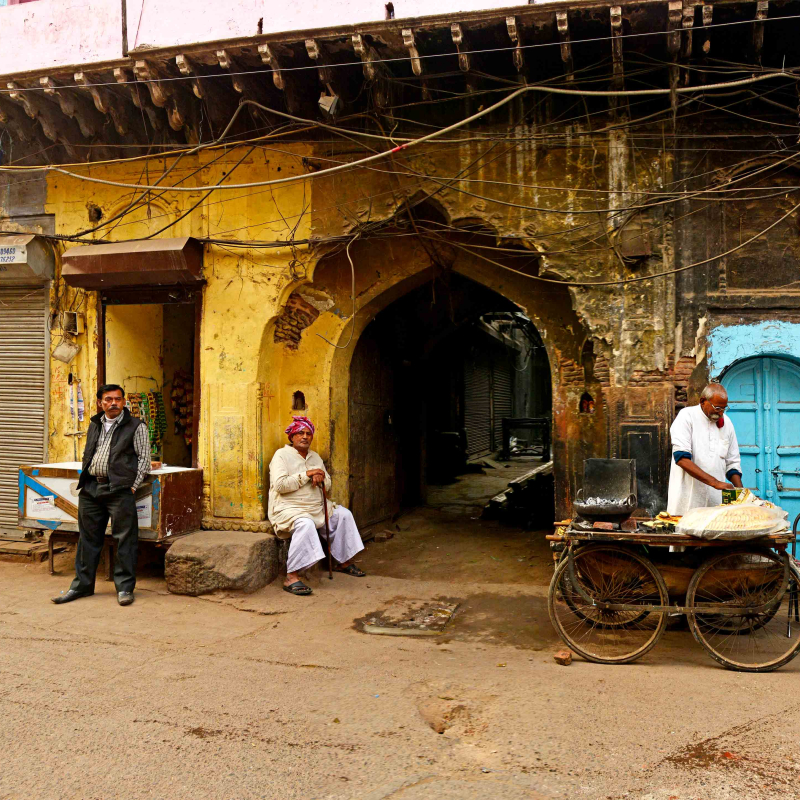Shahjahan commenced the building of his new capital in 1639. It took almost nine years for its completion and the city was finally inaugurated in 1648, probably in the month of April, coinciding with Nauroz—the new year of the Persians. Exactly 100 years from its founding, Delhi was laid waste by the army of Nadir Shah. Mir Taqi Mir, the master of Rekhta—mixed language—that Urdu was known as in those times, was to write:
अब ख़राबा हुआ जहान आबादاب خرابا ہوا جہان اباد
वरना हर एक क़दम पे यां घर थाورنہ ہر ایک قدم پہ یاں گھر تھا
Jahanabad[1], every step was home
is now nothing but desolation.
Mir Taqi Mir laments that before this destruction visited Shahjahanabad, it was one of the most fabulous cities in the world.
There are enough contemporary records that speak of the riches of the city and the profusion of its palaces, havelis, markets, gardens, water bodies and avenues. Like the ancient city of Rome, Delhi too was not built in a day or even in nine years. For that matter, like all living cities, it has seen constant construction and like many cities that have been sacked by invaders, Delhi too has witnessed large-scale destruction. The consequence of this cyclical process of destruction and construction has been a myriad styles, diverse vocabularies of architectural expression, sometimes combining with and fusing into their predecessors and at other times, standing up like sore thumbs. One can witness a built heritage that is unique to Delhi, despite sharing the constituents of this strange melange with elements that developed in Awadh, Rajputana, Bengal, Portugal, France, Spain, England. But what is currently destroying all that survives of this varied and rich inheritance is a product of doubtful origin and parentage—the so-called Mall Architecture—consisting of steel and glass and nothing else. Whatever survives of the rich architectural heritage of the city will succumb to this pestilence unless drastic measures are initiated.
At the time when Shahjahanabad was inaugurated, there were large stretches of open land, like Ballimaran, inhabited initially by those who ferried people across the river, and later, in the early 18th century, settled by Shamsis or the Qaum-e-Saudagaran from Punjab. The area was built up only gradually.There were parts that remained unbuilt till the early 20th century, like the place where the Darya Ganj Police Station came up in the early 1930s. Also, the Sultanate period graveyard, near Kalaan Masjid and the mausoleum of Shah Turkman Bayabani that saw construction in the post-Independence period, were spaces built when people escaping to Delhi from the rioting mobs in the surrounding areas of West UP camped in the graveyard and eventually settled down here. There were places that were built up earlier but the structures were razed to the ground by successive regimes as signs of conquest, as was done later by the British colonialists in the immediate post–1857 period with all the structures outside the fort walls, or half a decade later, with the area where the Railway Station came up in 1865. So what one witnesses today as the architecture of Shahjahanabad is not something that was built in one large continuous movement of construction, but partly remnants from phases of destruction and the remaining, one might add, ongoing insensitive encroachment.
When Shahjahanabad was inaugurated in 1648, the capital had returned to Delhi after almost 90 years from the time of the death of Humayun. A section of the area upon which Shahjahanabad came up had been part of the fifth city of Delhi namely Firozaabaad. Now known as ‘The Kotla of Firoze Shah’, this area extended roughly from the present day Turkman Gate of Shahjahanabaad to the grave of Sultan Raziaat Bulbuli Khana, near the beginning of Bazar Sitaram. Three structures, belonging to the reign of the 14th century ruler Firozeshah Tughlaq—a mosque and two mausoleums—the Kalaan or Kaali Masjid, the mausolea of Shah Turkman Bayabani and of Razia Sultan, though now greatly modified, survive in this area.
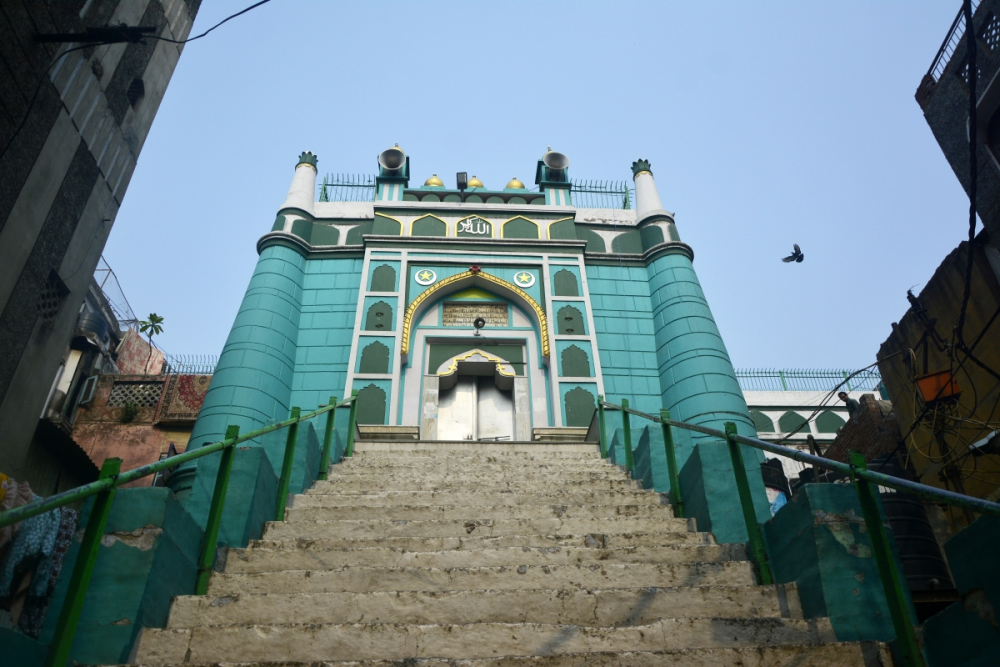
Fig. 1: Kalaan Masjid
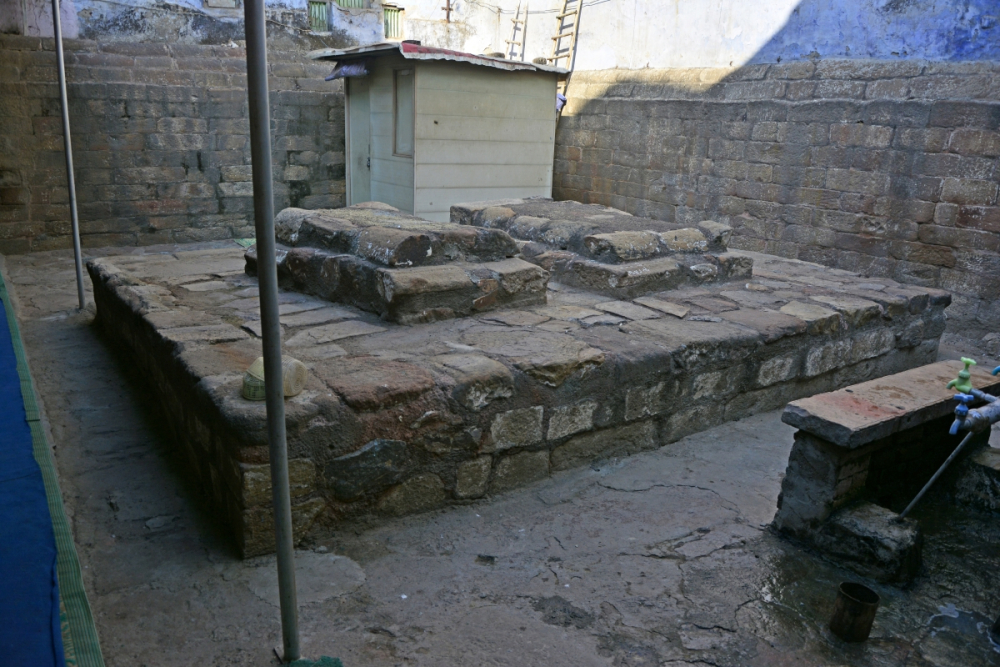
Fig. 2: Grave of Razia Sultan
Despite being plastered and painted over and covered with green tiles and fine marble dust at places, these three structures present a picture that is at great variance from the building techniques and material used to build the city of Shahjahan.These three structures, like all construction throughout the Sultanate and early Mughal period in Delhi, stand out because they were built with the locally available Delhi quartz. This metamorphosed rock, mined from the Aravalis, did not lend itself to carving because of its brittle nature. As a result, buildings built with the Delhi quartz were normally given a thick covering of limestone plaster that was later, before it had fully dried, decorated with incised patterns or calligraphy in what is known as stucco work.
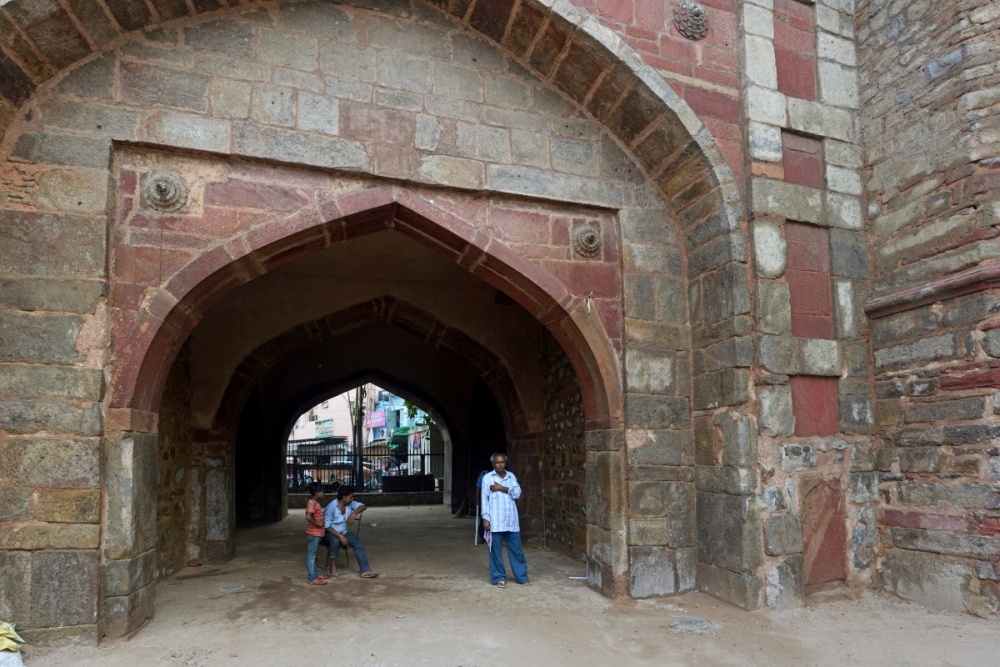
Fig. 3: Turkman Gate built of Delhi quartz
The monumental mausoleums, forts and mosques built in the Sultanate period introduced the technique of building with rubble where mis-shapen and irregular stones were held in place with a mortar of crushed bricks and slaked limestone. The exposed surfaces were given a cladding of dressed quartz, exterior walls were left plain, while interior walls were given a thick coat of lime plaster that was at times embellished with incised patterns or calligraphy.
As the Sultanate expanded and extended its control over parts of Rajasthan, we gradually see increasing use of marble and sandstone, initially only as embellishment but later as the principal building material. Construction in Delhi, during the time of the Mughals, especially Humayun and Akbar, are the best examples of the use of both. Adham Khan’s mausoleum was built principally with Delhi quartz and finished with lime plaster and sandstone embellishments. In the Jamali Kamali complex and in Purana Qila, including the Qila-e-Kuhna Mosque and in the mausoleum of Isa Khan, we see increasing use of sandstone, while the mausoleum of Quli Khan is almost totally covered with limestone. The tomb of Humayun is an example of the gradual eclipse of the Delhi quartz.
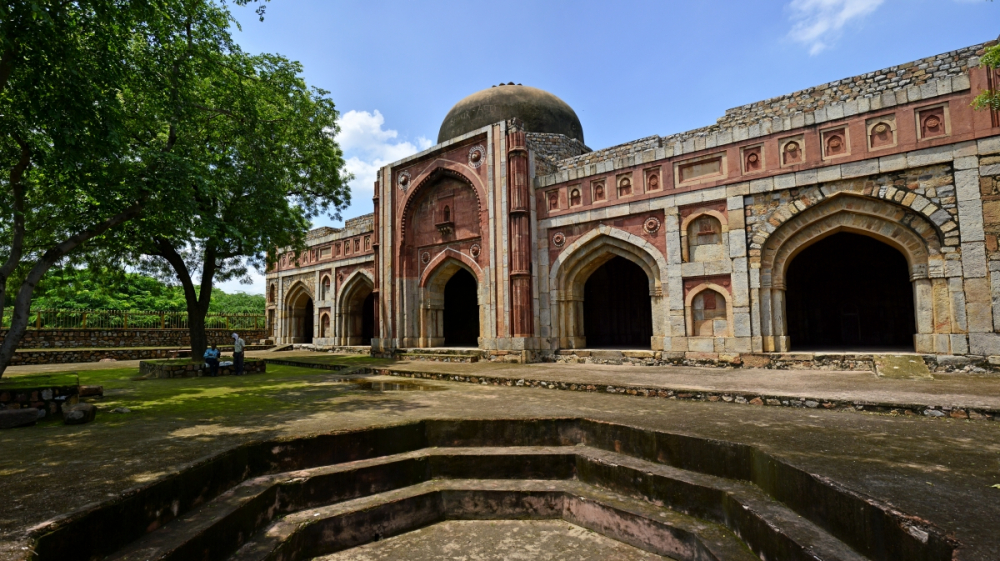
Fig. 4: Use of sandstone in Jamali Kamali Complex
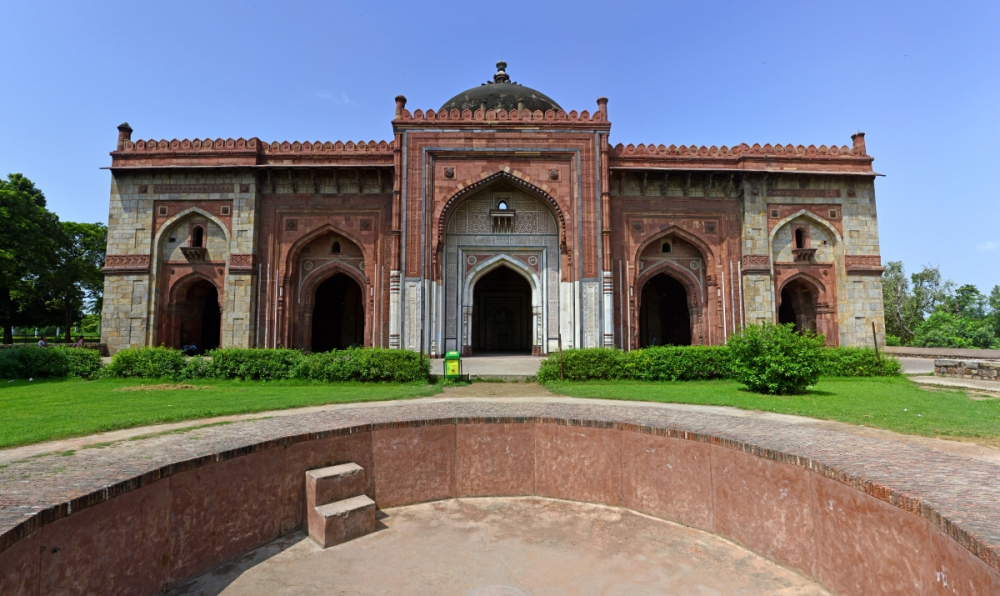
Fig. 5: Red sandstone used in Purana Qila
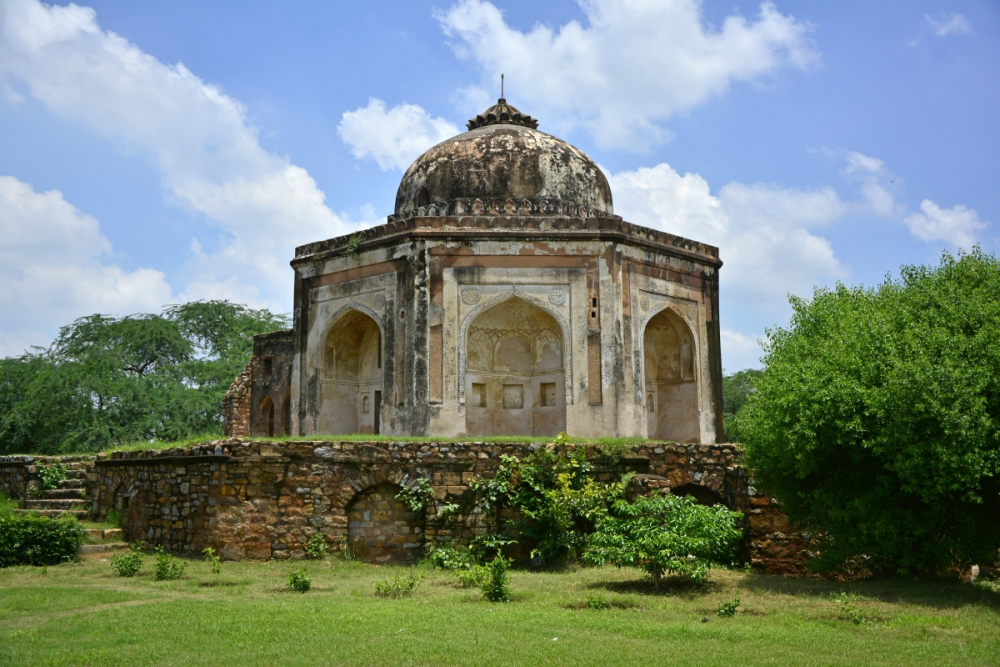
Fig. 6: Limestone used in Quli Khan's mausoleum, Jamali Kamali
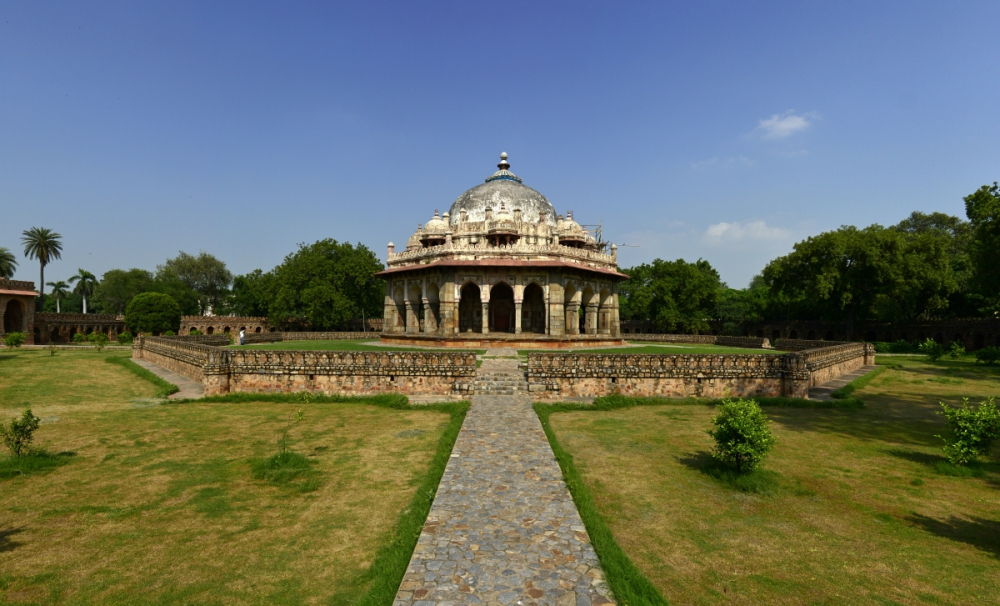
Fig. 7: Sandstone and Delhi quartz used together in the mausoleum of Isa Khan, Humayun's Tomb complex
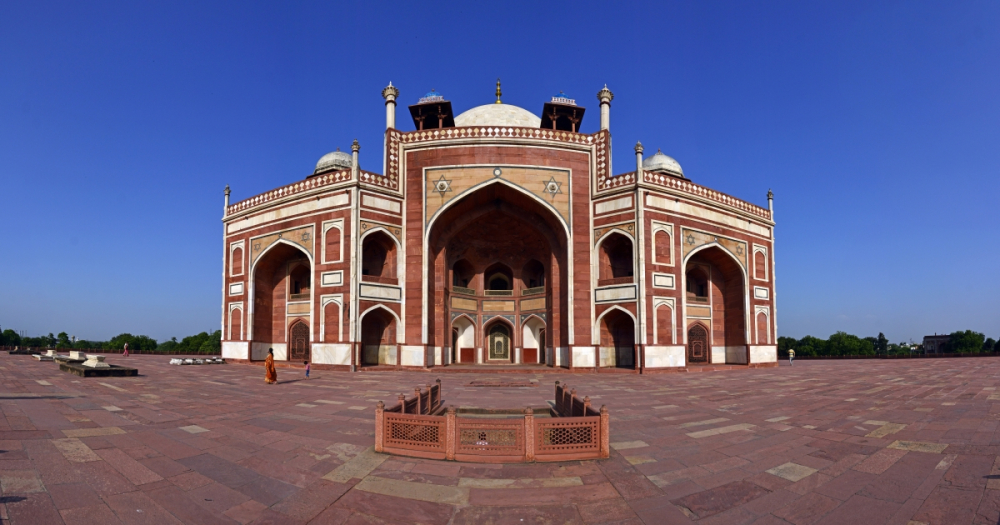
Fig. 8: Humayun's Tomb
These buildings were in stark contrast to the building style that gradually developed during the Mughal period in areas surrounding Agra, Lahore and Delhi, the latter reaching its apogee during the time of Shahjahan. The post–Humayun period is thus marked by the gradual eclipse of Delhi quartz and the emergence of a new style of architecture that is distinguished by sharper edges and clearer lines as compared to the Sultanate period.
The exceptions to this general trend include the Qutub Minar, the Alai Darwaza, the Mausoleum of Ghiyas-ud-Din Tughlaq and the Jami Mosque commissioned by Khizir Khan in the courtyard of the shrine of Nizam-ud-Auliya. All four are built with lime and sandstone, with some use of marble.

Fig. 9: Alai Darwaza and Qutub Minar (rear view): Use of Delhi quartz, sandstone and marble.
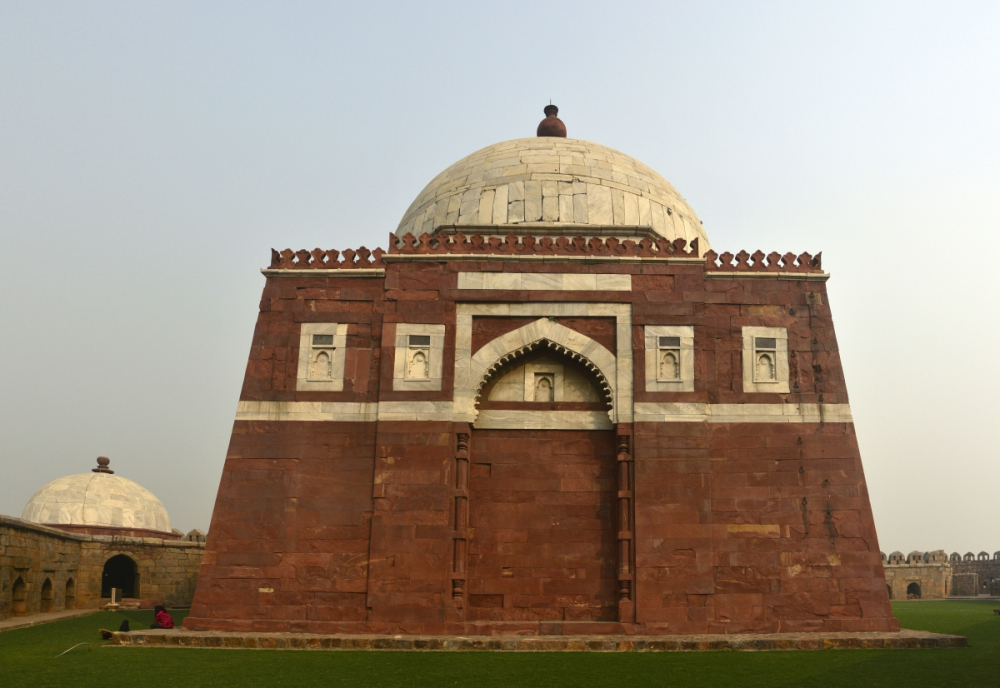
Fig. 10: Mausoleum of Ghiyas-ud-din Tughlaq
By the time Shahjahan had come to the throne, the Mughals, at Delhi, Agra, Lahore etc. had shifted almost exclusively to the use of marble and sandstone for monumental structures. At times, fascia with buff, brown and (rarely) yellow sedimentary stones were used as elements of novelty.
But this was as far as monumental structures went. Other structures such as shops, houses, smaller havelis continued to be built with Delhi quartz rubble and were given a thick coating of limestone and crushed brick plaster. So, in the main, before the arrival of the Europeans and the introduction of steel in construction, the city of Shahjahanabad was a mixture of monumental structures and larger havelis built with red sandstone and marble, while markets. houses and smaller havelis continued to be built with Delhi quartz. The base was gradually undergoing a change from the Sultanate and early Mughal period to the time of Shahjahan and later.
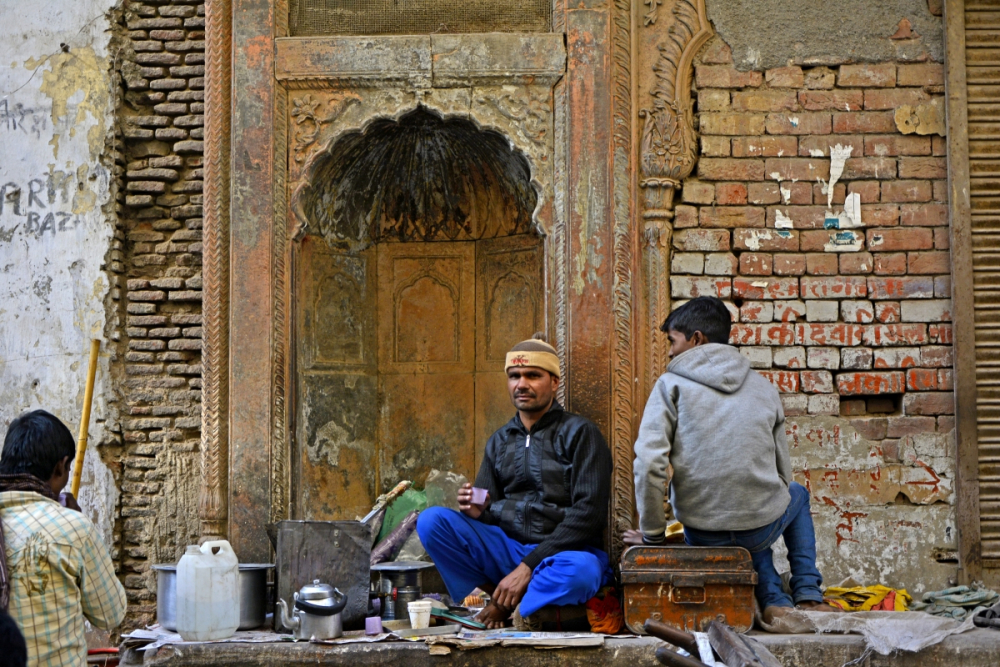
Fig. 11: Remnant of haveli structure in Shahjahanabad (Old Delhi)
The inner material that supported the façade during the Sultanate and early Mughal period used to be rubble masonry, held together with crushed brick and limestone mortar. This rubble masonry was now replaced with bricks. These were the really small narrow bricks known as the Lakhori or Kakaiya bricks that became increasingly popular during the reign of Shahjahan and held sway well into the very late 19th century and continued to be used till the early decades of the 20th century. They were gradually replaced by the large (approx. 9"x4"x3") bricks, popularly known as the ‘ghummaeent’ introduced during the colonial period, which are in almost universal use in India now.
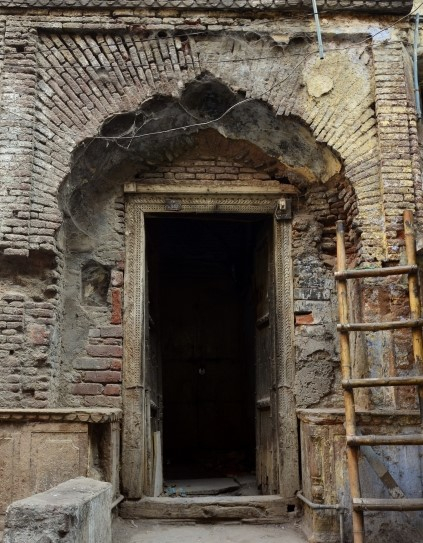
Fig.12: Lakhori or Kakaiya bricks
Through all these changes, there was one constant—the binding material of crushed kiln-fired bricks and limestone mortar—from about the late 12th century all the way to the mid–19th century. Though it was known in India even before the arrival of the Turks and Central Asians, its use was not widespread . This is because the ‘point and slot’ technique of building, especially for large palaces and forts, that relied on large blocks of stone fitting into each other, had little need of binding materials. The much longer lasting chuna-surkhi or crushed bricks and lime stone mortar, that had survived 600 years or more from the 12th century to the mid–18th century, gradually gave way to the quick setting Portland cement that was imported from cement factories from England for decades and began to be manufactured in India from the first decades of the 20th century.
The earlier havelis of Delhi made a gradual transition from the crushed brick and limestone plaster to brick and cement structures that were increasingly relying on iron girders to support their balconies. Chandni Chowk and Chawri and bits of Bazar Sitaram acquired verandas as the residents on the floor above extended their balconies into terraces.
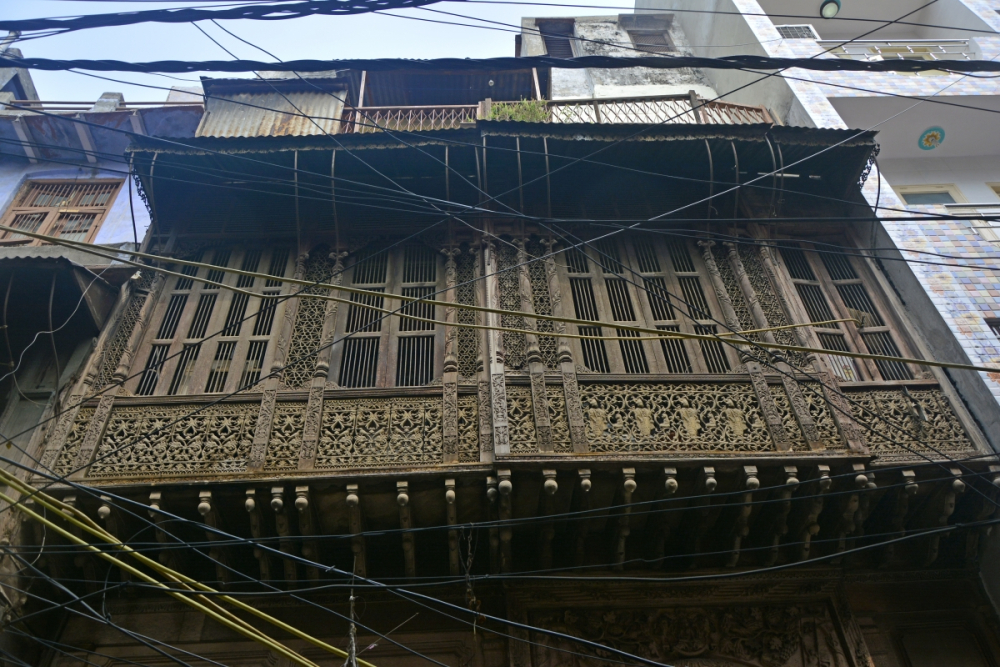
Fig. 13: Overhanging balcony of an old haveli building in Sitaram Bazar
Though the havelis, big and small, retained the basic design of construction around an open courtyard, they had gradually begun to grow vertical. The balconies and overhangs became larger and lanes began to shrink as structures on both sides inched closer to each other as they rose up. Many architectural elements drawn from the colonialists—metallic awnings supported on steel rods, cast or wrought iron railings, carved wooden pillars, Spanish blinds painted green in the style of Spanish villas or haciendas, the increasing use of stained glass, the replacement of thick walls with large number of doors especially on the first floor and above, the replacement of the cusped or scalloped arches of the period of Shahjahan with the Gothic or Roman arches—began to modify the look and feel of the architecture of Delhi, though still retaining a modicum of continuity in the layout and design of the houses and streets.
The first major break in the look and feel of the city came with the introduction of steel. The steel girders led to the broadening of the narrow balconies and passages that had traditionally rested on stone brackets. Broad verandas came up, resting on cast iron pillars with the intertwining initials of the builder Sultan Singh as in Kashmiri Gate or upon steel girders as in Chawri Bazar and Chandni Chowk, turning the broad avenues of Shahjahanabad into narrow congested streets. This was followed by a vertical growth in Shahjahanabad, made possible by the increasing use of steel in construction.
Shahjahanabad, therefore, is a living example of diverse building materials and techniques that reflect not only the Sultanate, the Mughal, the colonial but also styles that borrow from two or three building styles in combination. At present, we have no architectural style left at all and increasingly buildings have started looking like the hideous glass and metal scaffoldings that are mushrooming all over the city and elsewhere. This is a style of building that has erased the earlier distinctions of house, shop, and public structures. All the new structures coming up in Chandni Chowk, Chawri and numerous lanes and bylanes of Shahjahanbad have come to acquire the same uninspiringly impractical and absolutely ugly look.
Unless serious steps are initiated to arrest this trend, this living heritage city with its diverse vocabulary of architecture will suddenly disappear, to be replaced by a combination of metal and glass that has no relation to what has been, and thus these faceless heaps will ensure that nothing else survives.
